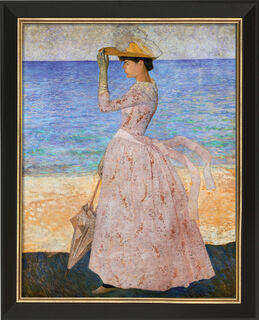Aristide Maillol
1861-1944
Alongside Auguste Rodin, who held him in high esteem, Aristide Maillol is one of the most important French sculptors of his generation. Yet his path to sculpture was quite unusual: It was around 1895 when he was in his mid-thirties, he began to work seriously with sculpture in wood and clay. He began working as a self-taught artist after studying painting at the École des Beaux-Arts in Paris. Maillol had initially became known as a painter and graphic artist clearly influenced by Paul Gauguin. However, he had already expanded his means of artistic expression early on by working intensively with ceramic art and with woven and knotted works. Maillol's first major solo exhibition was a compilation of tapestries and early small sculptures. From the turn of the century onwards, he concentrated more and more on sculpture.
On the one hand, Maillol's sculptures refer strongly to classical sculpture with their emphasis on evenness and balance. On the other hand, they take steps towards abstraction and, precisely because of this, he became a model for the following generation of sculptors. His main theme was the female nude, which he executed as a harmonious, sensual femininity par excellence, although developed on a living model, renouncing individual features.
Maillol's best-known works include the large sculptures "The Three Nymphs" in the Jardin des Tuileries in Paris and, especially among German art lovers, "The River", a reclining female nude that can be admired in front of the Hamburg Kunsthalle.

